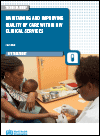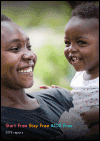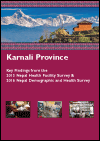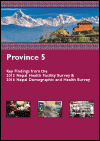What's New
Displaying results 1101 - 1110 of 4913

Resource | Publications,
Although significant progress has been made towards ending AIDS as a public health threat, with 23.3 of the 37.9 million (62%) people living with HIV receiving antiretroviral therapy (ART) by the end of 2018, many gaps in service access and quality remain.
The objective of this brief is to consolidate WHO guidance to support the implementation of high-quality HIV services through approaches to policy, strategy and service delivery, to suggest considerations for selecting measures of high-quality services and to provide case examples of quality management in HIV services in low- and middle- income countries.

Resource | Publications,
An increasing number of countries are adopting policies endorsing PrEP for HIV prevention. Emerging evidence from clinical research that different dosing strategies can be effective provides an opportunity to offer flexibility, choice and convenience to individuals who can benefit from PrEP and is considered by WHO in updating its guidance to countries. Based on the available evidence published so far, this technical brief updates the current WHO recommendation on oral PrEP to include an option of event-driven dosing for men who have sex with men.

Resource | Publications,
The Start Free Stay Free AIDS Free report reveals a mixed story. The global targets set for 2018 have been missed by a wide margin in some subregions and countries. Some countries, however, have shown impressive progress and achieved success across all the target areas. These country examples demonstrate that success is possible and highlight the need for a paradigm shift in action across all focus countries to reach the targets by 2020.
Fewer children newly infected with HIV and improved health for mothers living with HIV stand out as achievements of the global AIDS response in recent years.

Resource | Publications,
The World Drug Report 2019 is again presented in five separate parts that divide the wealth of information and analysis contained in the report into individual reader-friendly booklets in which drugs are grouped by their psychopharmacological effect for the first time in the report’s history.

Resource | Publications,
Gains continue to be made against the epidemic, but those gains are getting smaller year-on-year. There has been steady progress in the reduction of AIDS-related deaths, but efforts to reach the 2020 target for reductions in HIV infections are clearly off-track.
Gains in eastern and southern Africa are driving global progress. In much of the rest of the world, there are worrying setbacks in key countries and entire regions. More than half of new HIV infections in 2018 were among key populations and their sexual partners. An epidemic transition metric suggests that a diverse group of 19 countries are on the path to ending AIDS. Many more countries are not.

Resource | Publications,
This report provides the latest data on donor government resources available to address HIV in low- and middle-income countries, reporting on disbursements made in 2018. It is part of a collaborative tracking effort between UNAIDS and the Kaiser Family Foundation that began more than 15 years ago, just as new global initiatives were being launched to address the epidemic.

Resource | Publications,
The report highlights how communities are central to ending AIDS. Across all sectors of the AIDS response, community empowerment and ownership has resulted in a greater uptake of HIV prevention and treatment services, a reduction in stigma and discrimination and the protection of human rights. However, insufficient funding for community-led responses and negative policy environments impede these successes reaching full scale and generating maximum impact.

Resource | Publications,
The objective of this research was to better understand and document community-led interventions that aim to strengthen demand creation and uptake of HIV and sexual and reproductive health services, with a focus on engaging young people as beneficiaries, partners and implementers. The primary audience of this report are donors, technical cooperation agencies and government authorities.

Resource | Publications,
The 2015 Nepal Health Facility Survey (NHFS) is the first comprehensive assessment of health facilities in Nepal that harmonizes various health facility surveys among the MoHP and health development partners. The survey was designed to collect information from formal-sector health facilities in the country on the delivery of health care services and to examine the preparedness of facilities to provide quality health services in child health, family planning, maternal and newborn care, HIV, sexually transmitted infections (STIs), non-communicable diseases, tuberculosis, and malaria.

Resource | Publications,
The 2015 Nepal Health Facility Survey (NHFS) is the first comprehensive assessment of health facilities in Nepal that harmonizes various health facility surveys among the MoHP and health development partners. The survey was designed to collect information from formal-sector health facilities in the country on the delivery of health care services and to examine the preparedness of facilities to provide quality health services in child health, family planning, maternal and newborn care, HIV, STIs, non-communicable diseases, tuberculosis, and malaria.





